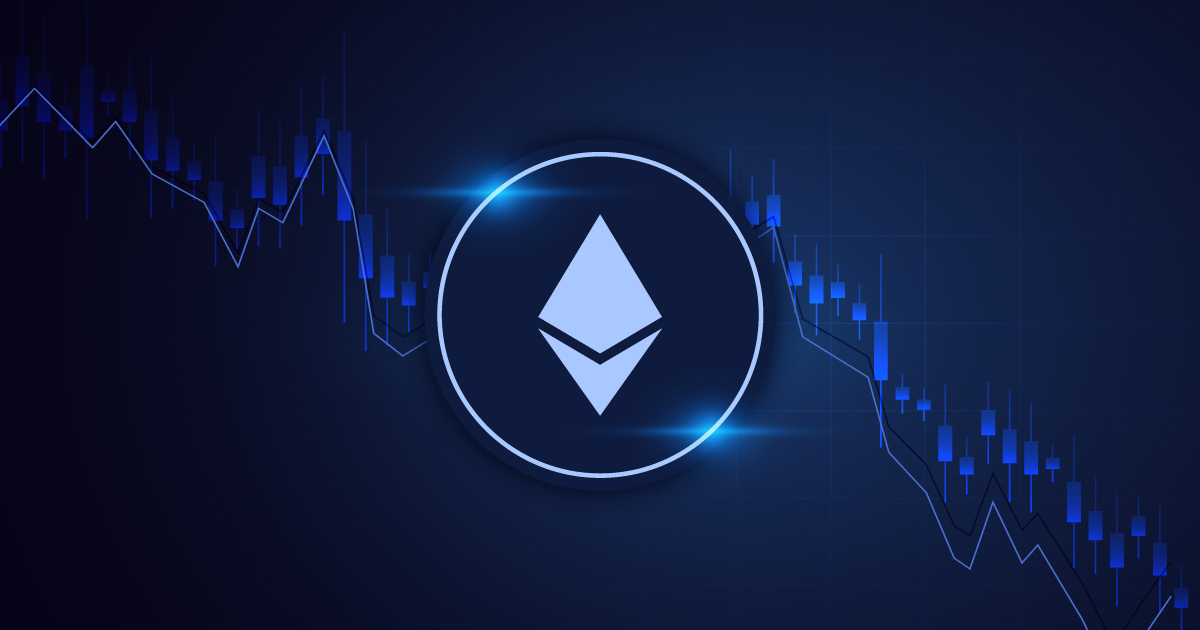As per the Google Trends data, “ethereum merge” hit an all-time high search volume last week.
The interest in ethereum is growing at a time when ether (ETH) is charting a bullish upward trend. The second-largest crypto asset has surged 22.6% in the past two weeks to trade at $3,456, compared to bitcoin(BTC) at 12.8% ascent during the same period, according to CoinGecko data.
Billed “The Merge,” Ethereum will upgrade, and officially it will be switching over to the proof of stake consensus from the present proof of work algorithm that powers bitcoin. Both the mechanisms allow for a distributed network of participants to verify the entire blockchain transactions. However, they differ in the way they achieve consensus.
Proof of work calls for miners to expend large amounts of computational resources and energy in order to add new transactions to the blockchain, albeit more secure. Proof of stake requires validators to stake crypto assets in order to organise transactions and create new blocks in the network. Although it may not be as secure as proof of work. however, It is considered more energy-efficient and decentralised.
Finally, the “merge” is going to happen
Talks of the merge were in circulation as far back as 2015, however, many times the network upgrade had been delayed. This time around though, investor enthusiasm is evident because there is “credibility” around the news that it is actually going to happen in the second quarter of this year.
For the record, the merge was originally supposed to happen in 2016 and 2017, but there were far too many issues that ethereum had to work towards and build around to get to this point,” according to Vance Spencer, the Co-Founder of Framework Ventures. “It’s more of a redemption or resurrection moment for ethereum in that it’s really executing on the long-term roadmap that it’s set out once upon a time.”
In August last year, the network successfully executed its London hard fork. Since then, more than two million ether tokens valued at over $7 billion have been “burned,” which means that they have been removed from the total supply of ethereum, making the crypto asset a “net deflationary,” according to Spencer.
More recently, ethereum merged on the Kiln testnet, the last ever testnet merge prior to the blockchain network’s long-awaited conversion to proof of stake.
The merge has now boosted the demand for ethereum staking, which refers to the act of “locking up” one’s crypto holdings to help validate transactions on proof-of-stake blockchains in exchange for rewards in the form of tokens. Currently, more than 10 million ether tokens are staked via 320,810 validators, according to Copper Research.
What’s also creating optimism for the merge is that there is an emergence of the “fee market of ethereum,” in Spencer’s view.
“This fee market is worth billions a year to the people who are currently mining but will soon be staking to earn this,” he said. “That’s something that really wasn’t happening two or three years ago.”
Though to be sure, the gas fees for ethereum has become prohibitively expensive at times for all the users to conduct transactions on decentralised finance, non-fungible token, and metaverse platforms built on the blockchain.
Staking yields and other benefits
So what exactly will happen at the time of the merge? The transition has two phases,
During the first phase, the network will turn off the proof of work and instead turn on proof of stake. Subsequent to that, ether holders will transact on the whole new proof-of-stake blockchain.
“What exists after that is the stakers will be paid in ethereum instead of the miners, this means there will be about 90% of a reduction in the supply that’s paid out daily. This will also have a positive impact on the environment. This is because on the environmental side, there will be a substantial 99% decrease in carbon as well as greenhouse gas emissions.
Moreover, immediately after the initial merge, Ethereum will have two parts — the one is the staked ethereum that’s locked up in the bridge and the other is the ethereum that is still free-floating. Further, stakers cannot withdraw the staked ethereum until the old and new chains formally merge during the second phase, which is estimated to happen sometime during 2023.
As miners transition to holding onto their ether tokens to stake in order to extract staking rewards rather than immediately selling the newly minted ETH tokens for profits, the supply will substantially decrease. At the same time, demand is likely to go up as institutional investors realise the profit earning potential in the fee market for Ethereum.
Logically speaking, the supply-and-demand imbalances could result in a shooting of prices for ether as well as the post-merge staking yield of ethereum. Already, crypto analysts estimate that post-merge staking yields for ethereum could surge to between 7% to 15% from the current yield that stands at below 5%. This is because transaction fees that are currently paid to miners will go a long way toward stakers and validators.
“If annual percentage yields go up, it’s logical to think that there will be more capital that’s interested in capturing those, so there will be more ETH staked and locked up,” Spencer said.
Despite the overall positive outlook on the merge, there is also a potential risk of another delay — this could particularly happen for the second phase of the merge — thus derailing the bullish investment thesis for ether.
Conclusion
According to Spencer, the consensus in the industry is that the first part will happen in June, but the formal merge of the two networks is yet to have a final date.
Spencer believes, that if that gets further delayed, it just means that there’s more ethereum that are on the other side of the bridge that can’t be pulled back over, so that would aggravate any potential shortage of supply.

